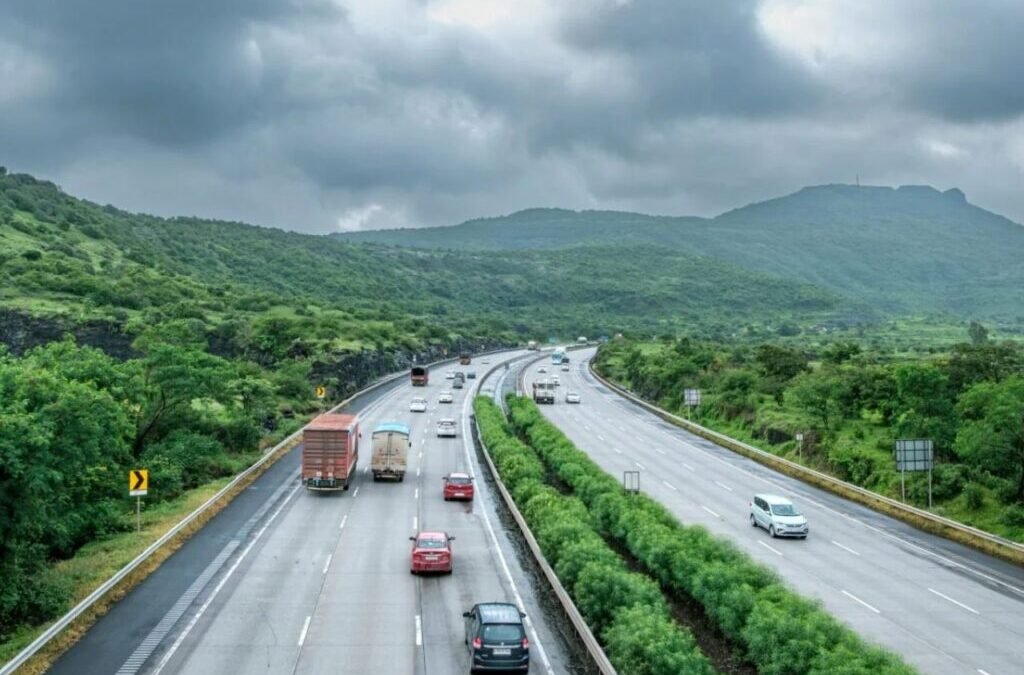Synopsis- The Mumbai–Pune Expressway ‘Missing Link’ Project is a flagship infrastructure project to bypass the accident-prone Khandala–Lonavala Ghat section. The Missing Link is a 13.3 km project with twin tunnels and major bridges that will help reduce travel time, improve safety and connectivity. It will create improved connectivity to Lonavala, Talegaon, Chakan, and Pimpri-Chinchwad, resulting in better logistics and improved tourism, real estate, and industrial development.
Introduction
In terms of using a corridor for an access-controlled toll road, the Mumbai-Pune Expressway, which is India’s first six-lane toll road of this sort, is a pertinent and meaningful part of travel between Maharashtra’s two heavyweights of economy, namely Mumbai and Pune. Accordingly, the Mumbai-Pune Expressway represents a substantial corridor for logistics, tourism and daily commuting, but the Khandala-Lonavala Ghat section has been a considerable bottleneck for a great period with its turning curves, steep gradients, landslides, and accidents. This article will examine the effects on neighbouring towns and industrial hubs, such as Lonavala, Talegaon, Chakan, Pimpri-Chinchwad and others along the corridor.
The ‘Missing Link’ Project: A New Era in Transit
- Covering a distance of 13.3 km, the ‘Missing Link’ Project provides an unparalleled engineering opportunity to avoid the dangerous Khandala ghat section. The works include two twin tunnels, 8.9 km and 1.75 km in length, and two major viaducts, including a fantastic cable-stayed bridge over Tiger Valley.
- One of the tunnels goes down within Lonavala Lake and will be one of the longest highway tunnels in India. The proposed plans for the project will shorten the travel distance between Mumbai and Pune by about 6 km and shorten travel time on the route by 20–30 minutes.
- The project is about 92-96% operational; it is estimated the project will be completely operational in late 2025. The project is designed to provide safer travel, provide better logistics, improve tourism and regional connectivity.
Regional Impact: Key Areas Affected
1. Lonavala & Khandala: These picturesque hill stations will have a significant reduction in through traffic. Particularly on weekends, this will lead to reduced noise pollution, pollution and congestion. With reduced traffic, the probability of landslides and accident risks is reduced, and overall safety during monsoons is improved. Improved access is expected to increase tourism, leading to less uncertainty and making it more welcoming for people to visit. This will lead to more hospitality businesses. Homestays, hotels and eateries. Overall, there would also be improved real estate conditions for second homes/ wickets or weekend retreats.
2. Talegaon & Vadgaon: Proximity to the Talegaon toll exit is advantageous as improved access to the commuter population and freight vehicles will also improve operations in these towns. The new Talegaon–Chakan Elevated Road will help integrate the two zones with the adjoining, nearby industrial belts. Overall, it will shorten travel times by improving access, and linking to additional improvement initiatives will make these towns even more viable for increasing urbanisation and real estate demand. Overall livability of the areas will improve and provide future equity.
3. Pimpri–Chinchwad (PCMC): PCMC, which is an important industrial belt, is home to Bhosari, Akurdi, and Talwade MIDC. PCMC will benefit from expedited cargo access to JNPT and to Mumbai. PCMC will complement the expressway, with the city’s development of 42 internal “missing link” roads. better access will benefit the automobile, electronics, and manufacturing industries in terms of reduced time for logistics and lower operating costs.
4. Chakan: Chakan MIDC, a manufacturing centre with companies such as Volkswagen, Mahindra, and Mercedes, should see greater efficiencies in their supply chains and a reduction in costs related to logistics. The improved access to highways makes it a more attractive prospect for future industrial investment.
Also read: Whitefield vs Electronic City: Which Bengaluru Hub Offers Better Returns in 2025?
5. Other impacted zones:
- Khopoli will benefit from being the point of origin of the tunnel and enhanced connectivity to Panvel and Karjat, particularly during disruption of the monsoon.
- Kamshet & Somatane Phata (on the original route), will see positive impacts from less noise from heavy vehicles, opening up opportunities for eco-tourism and quiet residential developments.
- Wakad & Hinjawadi (tech centres) will see more seamless business travel to Mumbai, which will have a positive impact on real estate industry and hospitality sector.
- Pune City Core (Shivajinagar, Kothrud, Baner), will see quicker intercity travel for business coordination, cargo operations, and commuting for corporate purposes.
Broader Economic and Social Impact
The Missing Link is not just an alternate route—it is an economic driver. In the context of the Missing Link as a zero-fatality corridor, it improves safety on the road, making logistics for industry more efficient, and creates additional tourism, real estate, and manufacturing growth. As it assembles intercity mobility, business travel, warehousing, and weekend tourism all improve. The project will drive infrastructure-led development across the semi-urban landscape of Maharashtra, contributing to the overall economic development of the State of Maharashtra
Conclusion
The Missing Link represents not just infrastructure development, but finally a massive shift to Maharashtra’s development agenda. With the shift to safer travel, quicker connectivity and countries’ upliftment taken into consideration, it is a great opportunity for Mumbai, Pune and every growing developing centre along the corridor, which sets the groundwork for sustainable, inclusive development.
Written by N G Sai Rohith
The post This New Link on the Mumbai-Pune Expressway Is Reducing Travel Time; What It Means to Real Estate Investors appeared first on Trade Brains.

